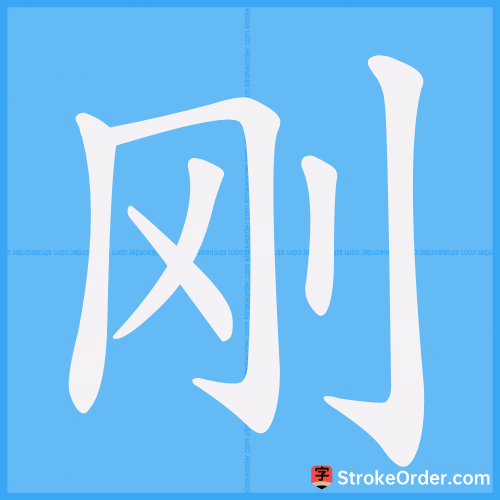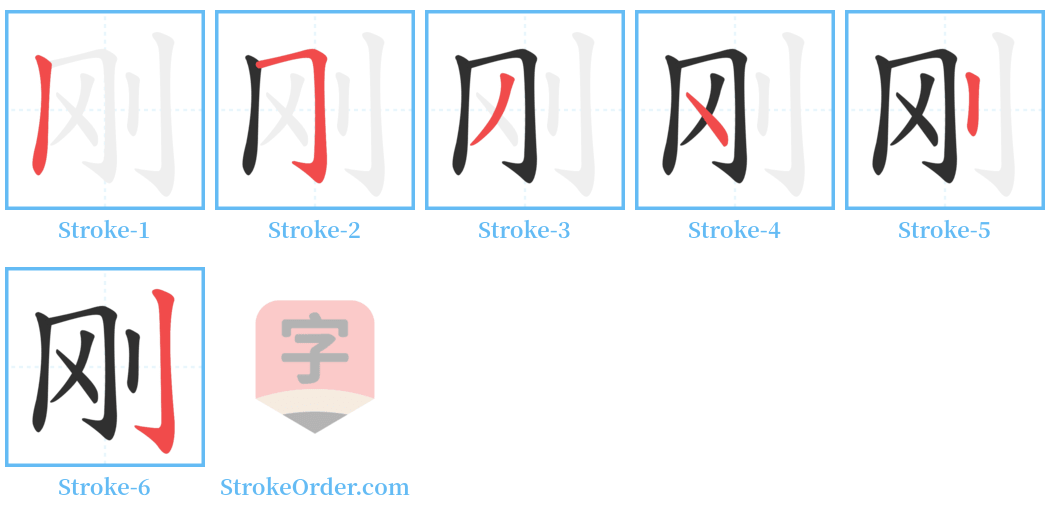刚 Stroke Order
Animated Stroke Order of 刚

Stroke Order Diagrams for 刚

Step-by-Step Handwriting Guide for 刚

Learn to Write Chinese Characters with Video Tutorials
Watch the video of writing the Chinese character "刚", learn the correct stroke order (笔顺) of the character "刚", and master the standard way of writing the character "刚".
Free Printable Handwriting Practice with Stroke Order: 刚
Printable Writing Practice Worksheet of "刚" in Portrait Orientation (Tian Zi Ge)

Printable Writing Practice Worksheet of "刚" in Landscape Orientation (Tian Zi Ge)

Information of 刚
Pinyin
gāng
Radical
刂
Strokes
6 strokes
Usage
★★★★★
Definition
hard / firm / strong / just / barely / exactly
刚 gāng
1. Hard; strong; in contrast with “柔” (soft).
硬;坚强,和“柔”相对。
2. Just right; exactly.
恰好;恰巧。
3. Just; only.
才。
4. A surname.
姓。
刚 gāng
Definition as adjective:
1. Hard (同本义) [En. hard].
Example: 剛,坚也。
2. Firm (坚强) [En. firm].
Example: 刚,强也。
3. Upright (刚正,刚直方正) [En. upright].
Example: 刚正而不随流俗。
4. Stubborn (倔强固执) [En. forward].
Example: 性刚愎,好自用。
5. Outspoken and upright (刚直) [En. outspoken and upright].
Example: 刚直而有锋芒。
6. Firm and powerful (年富力强,坚强有力) [En. firm and powerful].
Example: 刚健敏捷。
刚 gāng
Definition as adverb:
1. Indicates that an action or behavior is limited to a certain scope, equivalent to "barely" (仅仅) [En. barely].
Example: 这山洞刚能容一人进去。
2. Indicates that something has just reached a certain degree, meaning “not more, not less,” equivalent to "just right" (恰好) [En. just right].
Example: 水刚剩下一杯了。
3. Indicates that an action or situation has occurred not long ago, equivalent to "just now" (刚才) [En. just now].
Example: 战斗刚结束。
4. Used in complex sentences, indicating that two events occur consecutively, equivalent to "as soon as" [En. as soon as].
Example: 刚进教室,上课铃就响了。
Input Method for 刚
Pinyin
gang1
Wubi
mqjh|mrjh
Cangjie
bkln
Zhengma
ldkd
Four Corner
72200
Unicode
U+521a
Same Pronunciation Characters